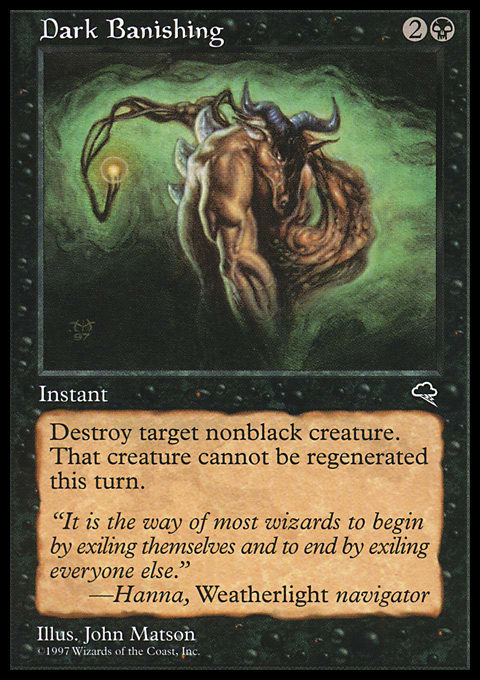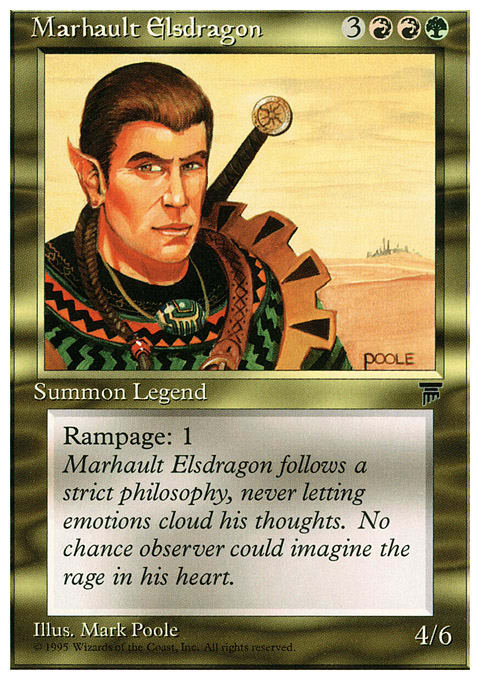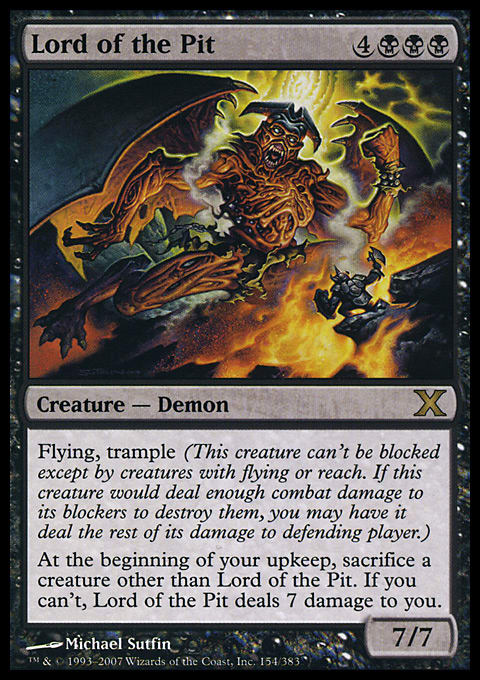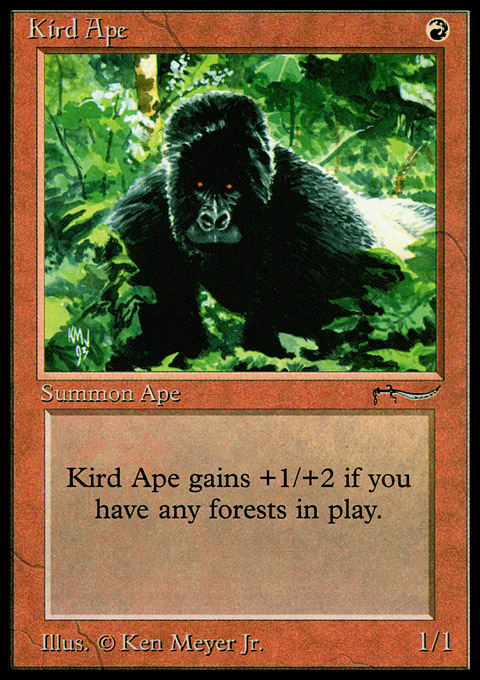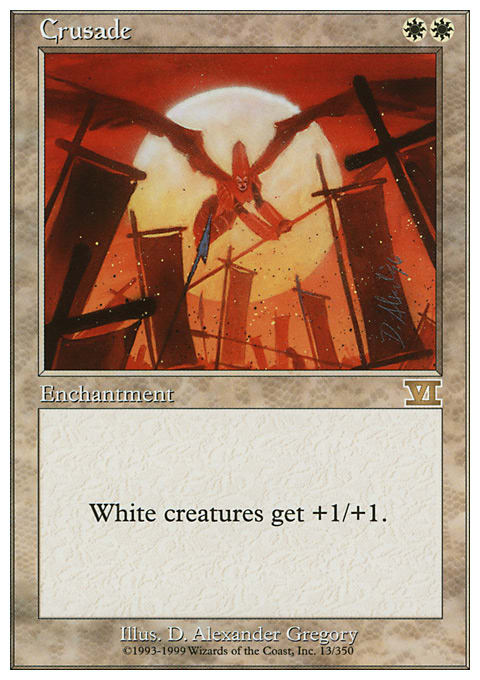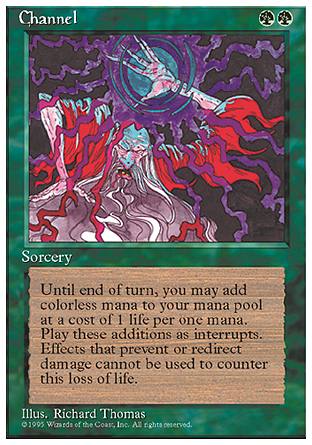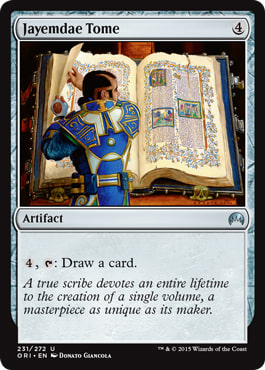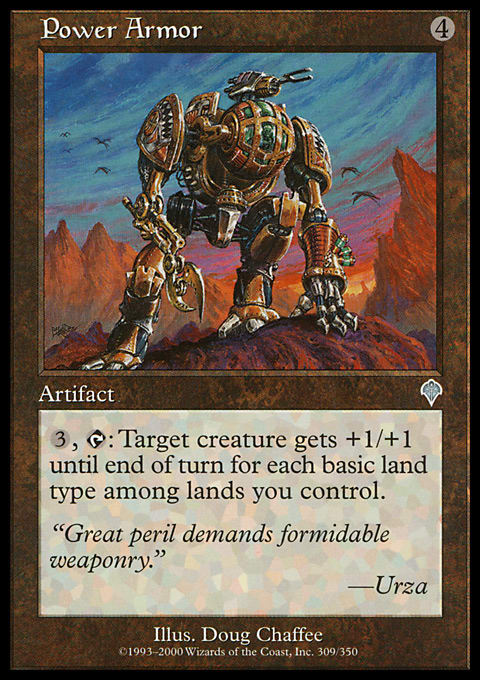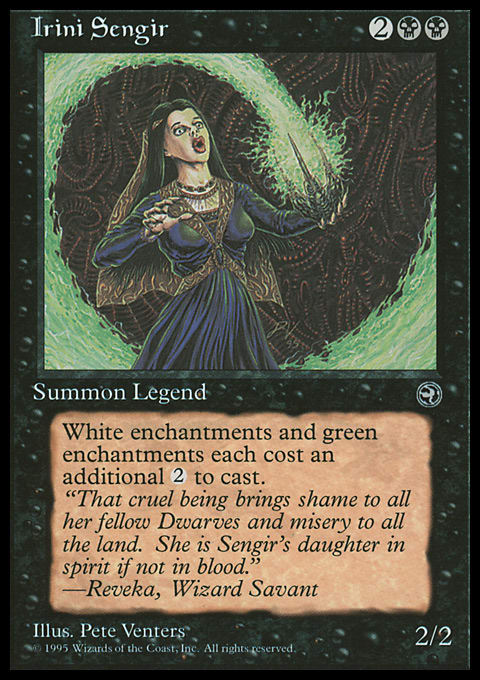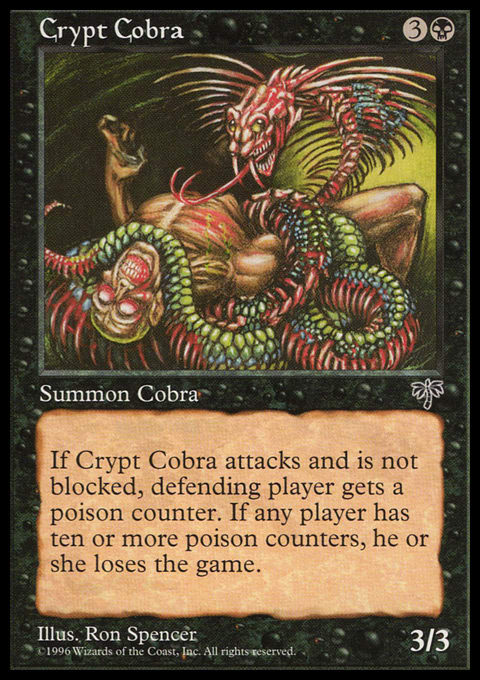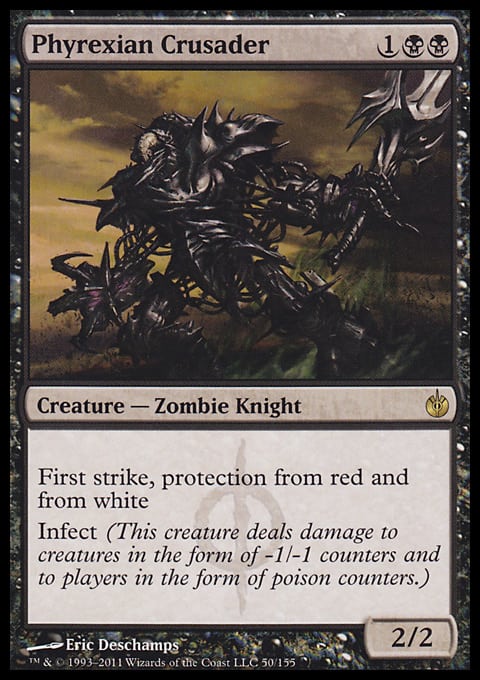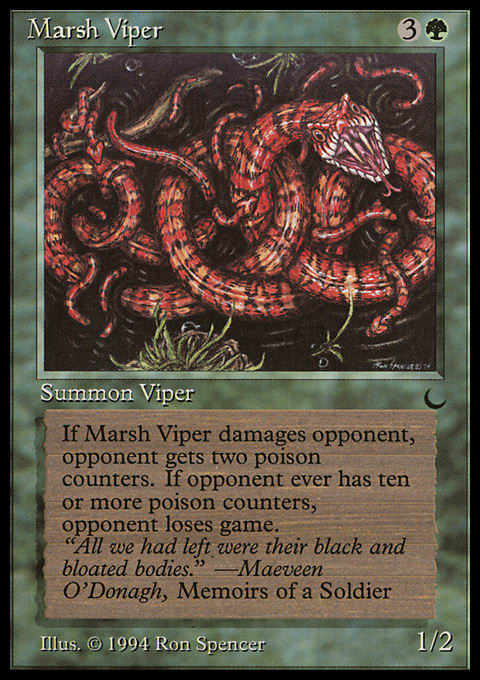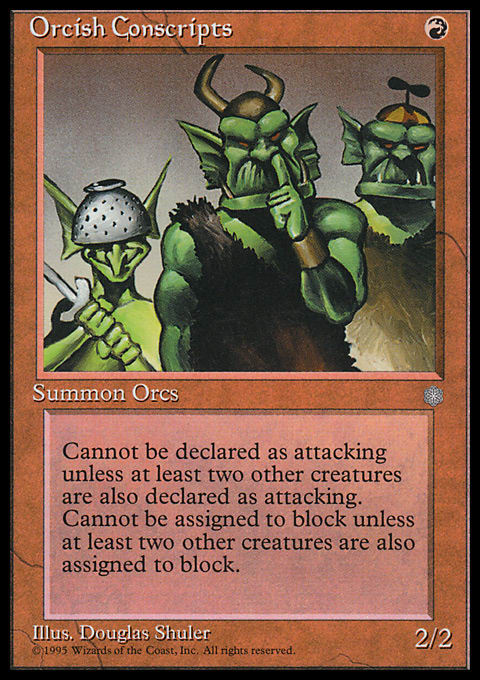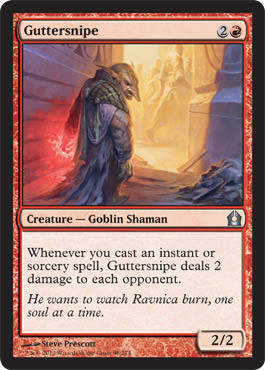I have fallen in love with old Magic cards and purchase them regularly. I've made it a point to build my collection to include the entirety of Magic's history, not just recent blocks.
But why? Why buy copies of Dark Banishing if you can go can purchase copies of Doom Blade or Murder instead? Why care about cards with cumulative upkeep, rampage, and other dead abilities?
I aim to answer these and other questions. I've created this list to help convince you that old Magic cards are worth the investment.
Hidden Gems
The first and best reason for buying old cards is that some of them are stinking good. What's more, not every player or retailer knows that, leaving good cards to be sold at dirt-cheap prices.
Recently, a used DVD and video game store in my town decided to get into the Magic business. They started carrying boosters of all the new sets, card sleeves, and other accessories. They also put out boxes of commons and uncommons from old sets. They charge ten cents for commons. Here's a list of "commons" that a friend and I found in their bins:
I found duplicates of most of these cards and quickly had play sets of some very nice, old cards. Sure, they have white borders. Sure, some of them have pretty lame art. But they still win games and are a heck of a lot of fun to play.
Grow Your Tribal Options
I’ve never met a Magic player who doesn't enjoy building a tribal deck. Even the most combo-oriented players like to build a good Zombie deck once in a while. I've taught a number of friends how to play Magic and have noticed that tribal is a common theme new players build around.
If you buy old cards, you can grow your tribes quickly and with more variance. For example, many Faeries in the old sets were green. Many of them did non-green things (like fly). Most of the new Faeries in the game are blue or black with only a splash of green (like Groundling Pouncer and Silkwing Scout). Want to build a 3-color Faerie deck? Start searching through your store's collection of Legends—or even Homelands.
Other examples are Orcs, Dwarves, and Thrulls. Save the recent Thrulls in the Return to Ravnica block, you just don't see many of these creature types in new sets. You can’t play a tribal deck with any of these creature types if you’re not willing to buy old cards.
Deck-Building Challenges
I'm always looking for a good deck-building challenge. A recent challenge I set for myself was to build a playable deck that includes cards found only in Limited Edition Alpha and Limited Edition Beta. Here's what I came up with. I challenge you to do the same.
"YOU BETA BELIEVE IT"
- Creatures (18)
- 1 Birds of Paradise
- 1 Fire Elemental
- 1 Grizzly Bears
- 1 Shanodin Dryads
- 1 Shivan Dragon
- 1 Stone Giant
- 2 Dwarven Warriors
- 2 Hurloon Minotaur
- 2 War Mammoth
- 3 Giant Spider
- 3 Llanowar Elves
- Spells (19)
- 1 Giant Growth
- 1 Red Elemental Blast
- 1 Shatter
- 3 Fog
- 3 Lightning Bolt
- 1 Channel
- 1 Stone Rain
- 1 Tranquility
- 2 Fireball
- 1 Aspect of Wolf
- 1 Orcish Oriflamme
- 1 Regeneration
- 1 Wild Growth
- 1 Jayemdae Tome
I make no claims that this is a great deck. If I were to take it to a local Friday Night Magic and play it against someone between rounds, it would be slaughtered.
But this exercise taught me something. It showed me which cards make up the backbone of Magic. All of these cards have been reprinted. Some have been reprinted numerous times. I don’t actually own a single Alpha or Beta card. (Look them up on CoolStuffInc.com and see how expensive they are.) But I do own reprints of many of the cards that appeared in those sets. This deck-building challenge helped me understand which cards Wizards of the Coast and players value highly enough to keep around in competitive play (such as Giant Growth and Birds of Paradise) and which cards just couldn’t hack it through the years (such as Aspect of Wolf and Stone Giant).
Block Drafts Are a Lot of Fun
Whether it's a Pack War, a multiplayer Draft, or a Sealed Deck duel, I love to see how new cards and mechanics interact in new Limited environments. I also read a lot of the columns on DailyMTG before new sets come out. By the time a set releases, I'm so primed to see the cards I've been reading about during previews weeks that I can hardly wait to crack some boosters and get going! (It's almost as though they plan for that to happen . . . )
By investing in old cards, I can recreate the new-set experience with sets that released before I started playing the game.
The first Duel Deck I ever purchased was Phyrexia vs. the Coalition. It’s comprised mostly of cards from the Invasion and Urza’s blocks. After playing with the decks, I went out and bought more cards from those blocks (such as the Dark Banishing I mentioned earlier) so I could experience their Limited environments. The Duel Deck was filled with so many goodies from those two blocks that I just had to experience it for myself. I was not disappointed. (Again, it's almost as though Wizards planned for this to happen . . . )
You Learn a Heck of a Lot about the Multiverse
This reason is mostly for the Vorthos among us. With twenty years of Magic history to catch up on, the Vorthosian joy of old cards is seemingly endless. The flavor text of old cards, the creatures, the legendary cards, the nonbasic lands—all of them provide clues to the overarching story behind MTG. For instance, I’ve been aware of the card Sengir Vampire for some time, but I never knew who Baron Sengir was until I started buying old cards. After I found Castle Sengir and Irini Sengir, I knew he had to be somebody important, and I looked him up. Now I know all about one of the most nefarious villains in the multiverse. As a result, I was also a lot more geeked to see the return of Sengir Vampire in Magic 2012.
You Can Trace the Growth of the Game Through old Mechanics and Card Stats
The rules to Magic have changed a lot over the years. The best reading you can do on this are Aaron Forsythe's columns. However, you can also learn a lot about how the game has changed just by tracing the rise and fall of various mechanics in old sets and by doing a some comparisons between old and new creatures.
A prime example of this is the rise and fall of poison counters in Magic’s history. Victory by poison counters was explored years ago, but it was never perfected until New Phyrexia. Take a look at Crypt Cobra and Marsh Viper. Opponents receive only 1 poison counter from Crypt Cobra even though its power is 3. At the same time, opponents receive 2 poison counters from Marsh Viper every time it damages them even though its power is only 1. What sense does that make?
The infect keyword cleans up this little quagmire in Magic’s past. It also increases the likelihood of successfully killing your opponent via poison counters. Unlike the old days, alternative win conditions are a real possibility in Magic. (Also see Vraska the Unseen and Battle of Wits—both legal in Standard as of this writing.)
Another keyword that’s taken years to develop is battalion. Consider the oldie Orcish Conscripts. It’s a turn-one 2/2 creature. Its rules text says it cannot attack or block “unless at least two other creatures” are attacking or blocking. That’s a pretty hefty price for a 2/2 on turn one. Battalion is a cleaned-up version of Orcish Conscripts’s handicap. Battalion is all-upside and no downside for creatures (which is handy when your opponent’s turn-one drops may include Diregraf Ghoul or Phantasmal Bear). If you start buying old cards, you’ll notice that old creatures had many negative effects. There’re more upside effects in the game now than there were in the beginning.
Changes in the game can also be seen by comparing new and old cards that share a converted mana cost. To see what I mean, let’s compare two uncommon creatures: Brothers of Fire and Guttersnipe. (Brothers of Fire was an uncommon in The Dark. It was later reprinted as a common.) They have the same converted mana cost and the same power and toughness. Brothers of Fire requires a stronger commitment to red, however, which might limit the decks you put it in. In addition to this, Brothers of Fire’s ability requires you to spend ![]()
![]()
![]() to deal only 1 damage to a target creature or opponent and it will deal 1 damage to you. Guttersnipe will deal 2 damage to every opponent whenever you cast an instant or sorcery.
to deal only 1 damage to a target creature or opponent and it will deal 1 damage to you. Guttersnipe will deal 2 damage to every opponent whenever you cast an instant or sorcery.
Brothers of Fire’s ability is a clumsy, expensive, less effective Shock. This tells me that early in Magic history, removing a creature via another creature’s ability was a bigger deal than it is today. They wanted players to pay for it and wait for it. I wouldn’t have learned this about the game if I wasn’t an active buyer of old cards.
Another example can be found in the Alpha-and-Beta deck above: Hurloon Minotaur. Compare his converted mana cost, rarity, and power and toughness with the same stats on Armored Warhorse. After doing this comparison, I understood that a good, vanilla creature that costs 2 of the same colored mana will have a power and toughness level of 2/3. Information like this helps during a Draft and when you’re trying to construct powerful, mana-efficient decks.
So, next time you visit your favorite Magic haunt, I encourage you to check out the Revised Edition bin. Dig into the Chronicles and Legends boxes. Or do some searches of the same sets on CoolStuffInc. You will find buried treasure there, and it might only cost you ten cents.














